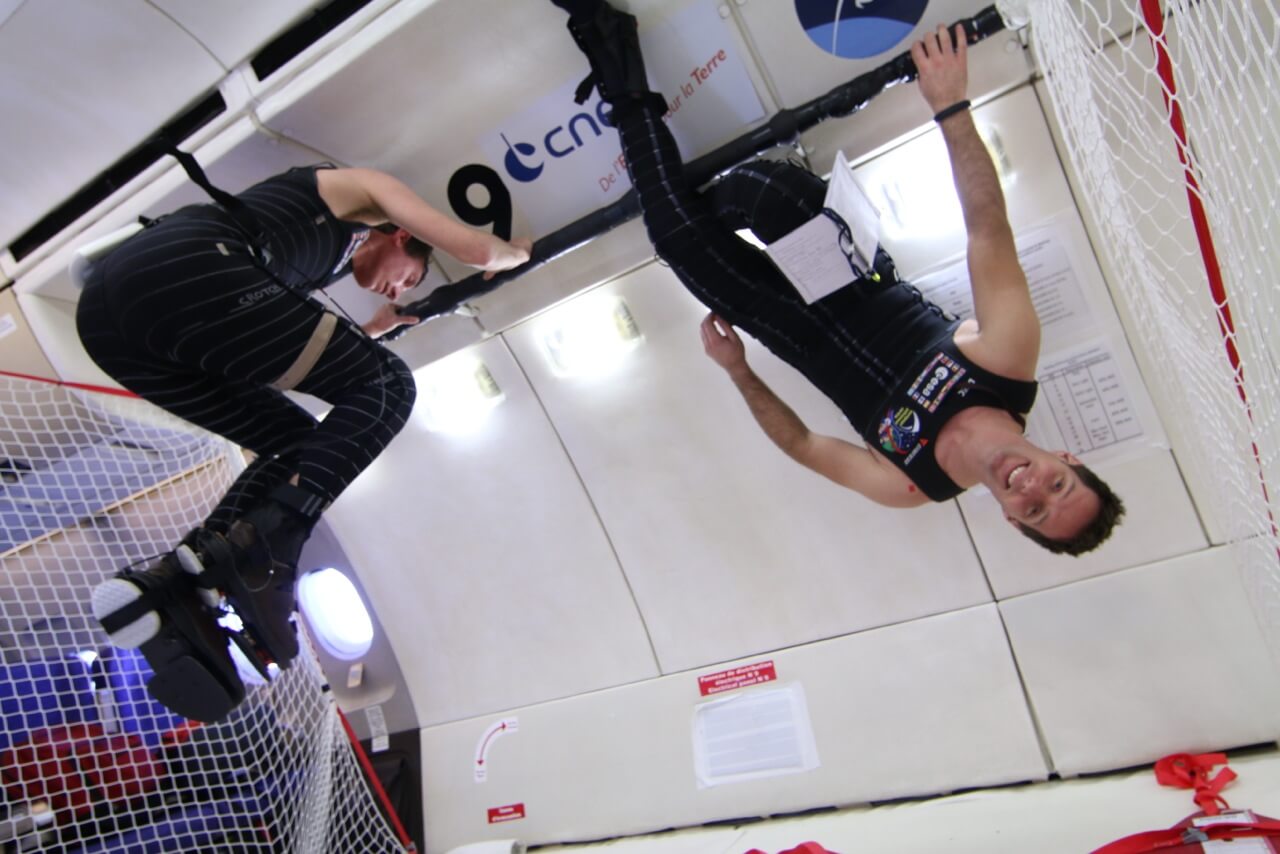
A long stay in microgravity leads immediately to a number of health problems in astronauts and cosmonauts. These include, for example, the loss of bone density and muscular atrophy. But there is another feature: man in zero gravity becomes higher as a reduced gravitational influence causes his spine to stretch. Of course, many of us would like to be higher, but in space it can be a real problem, because this stretching can cause pain.
The Royal College of London completed testing a new version of a special suit SkinSuit designed to solve this problem. The results of the latest tests have not yet been published in the public domain, but scientists are talking about very positive results.
The life and work of an astronaut in microgravity aboard the International space station 24 hours a day and 7 days a week is radically different from the usual 24-hour cycle of every human on Earth. In terms of earth’s gravity, our back is resting when we sleep. Sleep in the supine position allows the space between the intervertebral discs are filled with synovial fluid. It allows our bones and joints to relax from the load that they experienced during the day and cleanses the body from unnecessary substances and accelerates the metabolism of cells. Every time we Wake up, we become a little higher, but only for a while. During the day the force of gravity makes our discs again to get closer, we lose an average of 1.5 inches of growth and be the same as it was before. In the next sleep cycle, our back again is stretched, and so it is repeated from time to time. As for space, there are known cases when the spine was stretched to 7 inches.
“On Earth when you are on your feet, you’re under pressure from not only its own weight but also the force of gravity. Then when you go to bed, your back is stretched – this is a normal cyclical process,” explains the head of research, David green.
In microgravity astronaut back never shrinks under the action of gravity and is always in a relaxed, extended condition. As a result, there are frequent pains in the back.
“In space, no gravity load, so the space between the intervertebral discs is constantly increasing, the natural curvature of the spine is reduced, and the supporting back ligaments and muscles that no longer need to fight gravity, start to atrophy and weaken,” continues green.
Suit SkinSuit, the development of which over the last several years has been the Centre for space medicine of the European space Agency and king’s College London based on the work of the Massachusetts Institute of technology (MIT). As the main material he uses spandex that acts as a simulator of gravity and puts pressure on the whole body starting from the shoulders and to the feet.

The astronauts of the European space Agency tested the suit SkinSuit in the framework of parabolic plane flights (which simulates weightlessness) and on Board the ISS. Photo CNES/Novespace, 2014
The effectiveness of the suit on Board the ISS checked the Danish astronaut Andreas Mogensen, and French astronaut Thomas Sands. However, the first version of the suit the astronauts carried for very long. It is very uncomfortable and chilling.
“The first concepts were really very uncomfortable. They provide approximately 80 percent of the level of gravity load, but wear them only a couple of hours,” says researcher Philip Karvil’.
The suit has been decided to finalize. In addition, the researchers created a special “water bed”, half filled with water rich in magnesium salts. It was used as a medium to simulate the effects of microgravity on the body that astronauts experience in space. Scientists assembled this reception at the Dead sea, where high concentration of salts allows a person to literally lie on the surface of the water.
“During our more long-term tests we have seen an increase in human growth is similar to the phenomenon which is peculiar to the space environment. In other words, we can achieve the effect of microgravity at least in the question of its impact on the spine,” explains researcher Philip Karvil’.

Suit SkinSuit has passed several stages of improvements to become not only more comfortable, but still effective
The involvement of College students as testers for new versions of the costume helped to enhance its effectiveness. First, volunteers were asked to lie on the “water bed” that simulates the environment of microgravity. First undressed, and then dressed in a SkinSuit. After that, the researchers conducted MRI scans and checked the efficiency. As a result, the suit went through several stages of modernization, which made it more comfortable, wearable and effective. At the moment the latest version of the SkinSuit is the design of the Mark VI.
“The Mark VI version of the SkinSuit was very comfortable. So comfortable that it actually feels on the body, even when worn for long, physical activity or during sleep,” says Karvil’.
“The latest version provides about 20 percent of the gravity load, which is slightly more than lunar gravity. In turn, this is sufficient to spin and felt the desired effects of gravity and was always in good shape”.
“The results of our testing have not yet been published, but it seems that the version of the suit SkinSuit Mk VI is very effective to compensate the effect of stretching of the spine. In addition, we learned a lot about fundamental physiological processes and the importance of load distribution on the spine,” added Philip.
Scientists have created a “second skin” for astronauts, effectively simulating gravity
Nikolai Khizhnyak